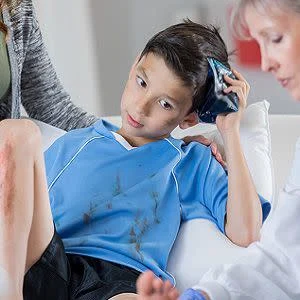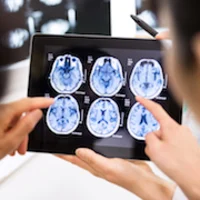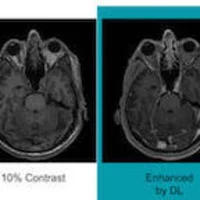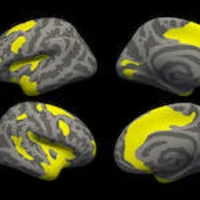Paediatric head trauma is an important cause of morbidity and mortality in children and may be seen in the setting of accidental or abusive injuries. Many of the patterns of head injury are similar to adults, but it is worth noting that the imaging manifestations of head injury in children are more complex due to the developing brain and calvarium, according to an article in the journal Seminars in Ultrasound, CT and MRI.
"The key differences in children stem from the complexities of the developing brain and calvarium, as well as some unique mechanisms of injury, to include abusive head trauma and birth-related injuries," the article explains. "Knowledge of the intricacies of paediatric head trauma will assist the radiologist in appropriately evaluating the full spectrum of injuries and help guide appropriate patient management and follow-up."
The article includes a table summarising the important imaging and clinical features specific to paediatric head trauma:
Calvarial fractures
- 3D postprocessing helps distinguish fractures from sutures
- Sutures have “zig-zag” course; fractures are linear
- Sutures merge; fractures may cross or widen sutures
- “Ping pong” fractures may be seen in kids due to malleable bones
Intracranial haemorrhage
- Fractures are less often seen with epidural haematomas (EDHs) in kids compared to adults
- Cortical contusions are less frequent and may occur in atypical locations in kids
Abusive head trauma (AHT)
- Subdural haematoma (SDH) – especially mixed density – with incompatible trauma history is suspect for AHT
- Internal septations in SDHs suggest chronicity
- One should be cautious in attempting to date SDHs
- Stellate fractures are more common in AHT than accidental trauma
- Bridging vein injury in the absence of appropriate trauma history is suspect for AHT
- Hypoxic-ischaemic injury is more common in AHT than accidental trauma
Birth-related injuries
- Small SDHs are commonly seen in normal birthing process incidentally
- Calvarial fractures and moulding may occur during birthing process
- Cephalohaematomas are subperiosteal and do not cross the sagittal suture
- Caput succedaneum and subgaleal haematomas may cross sutures
According to the article, cross-sectional imaging plays an integral role in identifying and characterising paediatric head trauma. On computed tomography (CT), for example, fractures that are nondisplaced and oriented similar to the plane of imaging can easily be overlooked. For these reasons, it is important to review the scout image, have reformatted images available in at least two planes (commonly axial and coronal or all three planes in the setting of trauma), or use 3-dimensional reconstructions to appropriately evaluate the calvarium.
As children are more sensitive and susceptible to the potential adverse effects of ionising radiation, there is a greater focus on the appropriate usage of radiographs and CT in the setting of paediatric head trauma.
"Ultimately, however, the risks of radiation have to be weighed against the need to identify clinically significant and treatable head injuries," the article points out. "With acute moderate to severe head trauma, acute head injury with altered mental status or neurological deficits, or in cases where symptomatic abusive head trauma is suspected, CT is warranted to identify intracranial injuries that may require immediate treatment. In these settings, the lowest dose reasonable to attain the necessary diagnostic information should be used."
Meanwhile, magnetic resonance imaging (MRI) may be appropriate as a follow-up study to identify additional or more subtle injuries that are not identified on CT and are important for patient management and prognosis. In patients with a subacute injury and delayed clinical presentation, MRI is preferred to CT.
"In patients with minor head injury, no loss of consciousness or neurological deficits, and no clinical findings suggesting significant head injury, imaging in the acute setting may potentially be avoided," the article adds.
Image Credit: iStock
Latest Articles
CT, MRI, paediatric head trauma
Paediatric head trauma is an important cause of morbidity and mortality in children and may be seen in the setting of accidental or abusive injuries. Many of the patterns of head injury are similar to adults, but it is worth noting that the imaging manife










